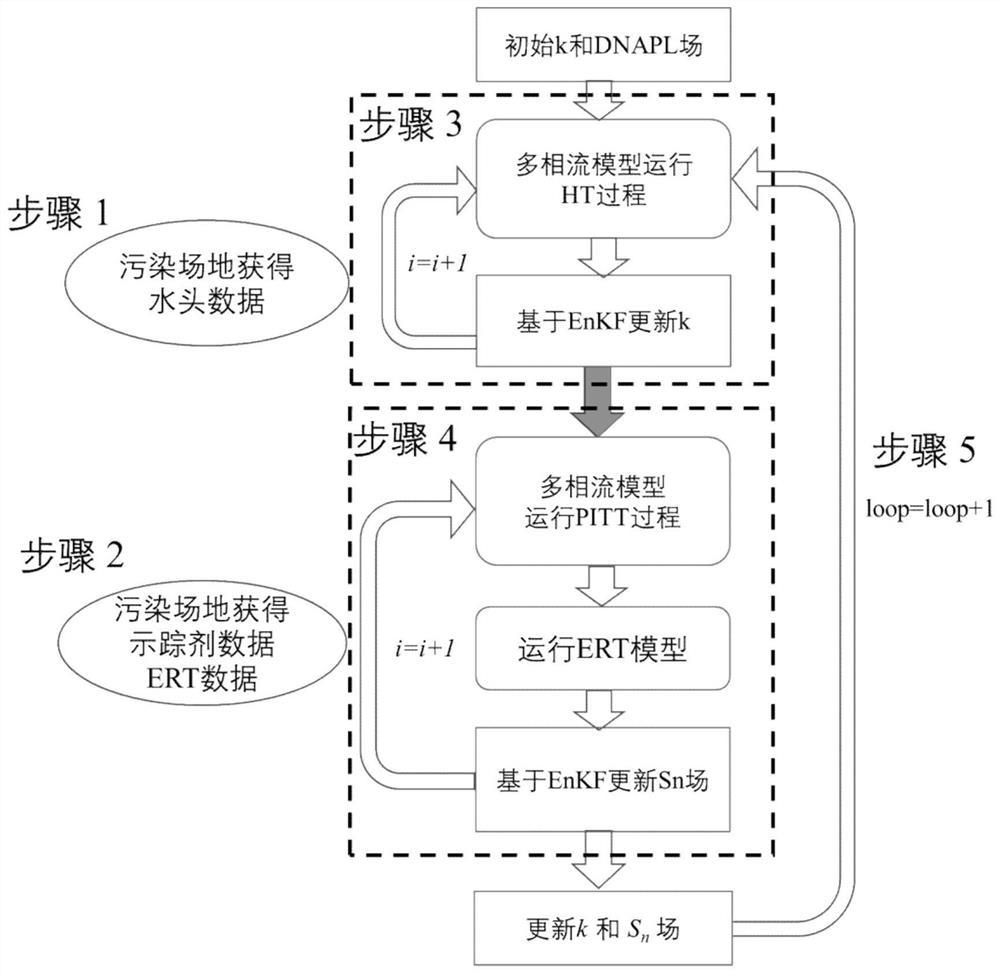A method of integrating multi-source observation data to finely describe heavy non-aqueous pollution sites
A technology of heavy non-aqueous phase and observation data, which is applied in the direction of electric/magnetic detection, measurement device, earthwork drilling and production for logging records, etc., and can solve the problem of limited observation holes, turbulence of dissolved tracers, etc. problem, to achieve the effect of increasing the permeability and improving the estimation accuracy
- Summary
- Abstract
- Description
- Claims
- Application Information
AI Technical Summary
Problems solved by technology
Method used
Image
Examples
Embodiment Construction
[0028] In order to make the object, technical solution and advantages of the present invention clearer, the present invention will be described in detail below with reference to the accompanying drawings and specific embodiments.
[0029] Such as figure 1 As shown, in order to consider the influence of permeability on the spatial distribution of heavy non-aqueous phase liquid (DNAPL) saturation, the present invention proposes a method of fusing multi-source observation data to finely describe heavy non-aqueous phase polluted sites, which is divided into five stages Do the inversion:
[0030] Phase 1: Hydrodynamic tomography (HT) test is carried out on the contaminated site, the same wellbore is divided into many vertical well sections with water stoppers, water is pumped or injected in different well sections of different wellbores in sequence, and water is injected in other wells By monitoring the water level response in each section, a series of continuous intersecting hole...
PUM
 Login to View More
Login to View More Abstract
Description
Claims
Application Information
 Login to View More
Login to View More - R&D
- Intellectual Property
- Life Sciences
- Materials
- Tech Scout
- Unparalleled Data Quality
- Higher Quality Content
- 60% Fewer Hallucinations
Browse by: Latest US Patents, China's latest patents, Technical Efficacy Thesaurus, Application Domain, Technology Topic, Popular Technical Reports.
© 2025 PatSnap. All rights reserved.Legal|Privacy policy|Modern Slavery Act Transparency Statement|Sitemap|About US| Contact US: help@patsnap.com



